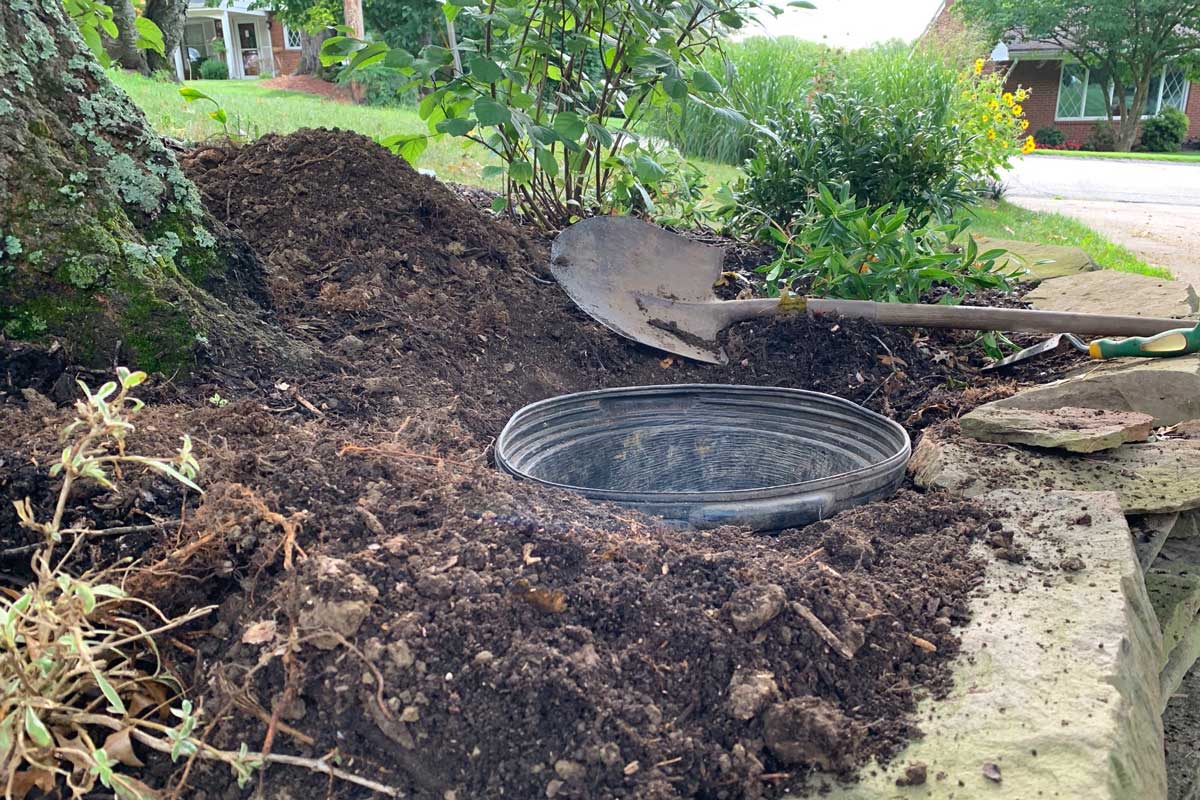The Best Perennials to Grow in the Shade: Short & Shady
If you’re looking for perennial plants that will grow in the shade, look no further. Pachysandra, barrenwort, and golden star are three short perennials that thrive in shade.
Trees have a lot of beneficial traits. One challenge is not “playing nicely” with smaller botanical neighbors. The shading capacity and especially the moisture- and nutrient-sucking ability of big trees give them a huge competitive advantage.
Big-rooted shade trees such as maples, oaks, tulip poplar, beech, sweetgum, and sycamore can easily stunt and sometimes kill plants growing near them – including turfgrass. Walnuts and butternut trees add the bonus plague of emitting a chemical (juglone) that’s toxic to many plants.
These competitive advantages grow over time as tree canopies widen and root systems expand two to three times beyond that.
It all adds up to a double-barrel challenge that gardeners often under-estimate. Besides the more obvious shade, big tree roots subtly deplete the surrounding soil of nutrients and both block and out-compete under-story plants for moisture.
This creates one of gardening’s most challenging situations – dry shade with root competition.

Only the toughest of competitors have a shot at growing in the dry shade and tree roots of a setting like this. George Weigel
When plants under trees show signs of struggle, giving them an extra boost of water and fertilizer can help mitigate the stress.
Weekly soakings might be needed during hot, dry summer spells, when mature trees take their biggest toll on smaller competitors.
A scattering of granular fertilizer once or twice a year – tailored to the type of plants – counteracts some of the trees’ hungry appetite.
Turfgrass and even so-called “shade plants” such as azaleas, astilbes, and ferns often go steadily downhill despite those efforts, though.
In that case, a better solution is to either replace the strugglers with species that are better suited to dry shade and root competition or to simply cede the territory to the conqueror and mulch the ground under trees.
For those dead set on turfgrass under trees, one option is to regularly overseed – or reseed altogether – with grass species most able to tolerate shade. Fine fescues are the best options in the North, St. Augustine grass is a good bet in the South, and Zoysia grass is a reasonably shade-tolerant species in the mid-range between those two regions.
Tree shade can be mitigated by limbing up or thinning out tree branches, while “top-dressing” the grass each fall with a thin layer of compost boosts nutrition and organic matter.
A quicker option is removing the struggling turf and laying sod. Sod is live grass, sold in carpet-like sections with roots. The sections are laid on top of loosened soil and watered to create an instant stand of thick grass.
Whether sodding or replanting with other plants, the ground under trees can usually be loosened while doing only minimal damage to tree roots. An inch or two of compost or topsoil can be added as well.
Never add more than four inches of soil over tree roots, though, or you’ll risk reducing soil oxygen and causing harm to the tree.
Also avoid slicing into index-finger-size or larger tree roots. Plant around them or in pockets between.
Disrupting or digging up some of the smaller mats of “feeder” roots is less of a problem. Arborists say established trees can usually afford to lose up to 10 percent of this type of root without endangering tree health.
The critical step is keeping the soil consistently damp for the first year or two after planting to help new plants establish. Even drought-tough plants need water in the early going.

These are the fibrous, matted “feeder roots” of a large tree. George Weigel
If you don’t like the bareness of a mulch-only bed but aren’t sure about the prospects of in-ground replanting, set flower pots of shade-preferring plants under trees and/or hang baskets of flowers from tree limbs.
However, these will need water every day or two, unless you hook up an automatic drip-irrigation system.
A second option is burying pots between the tree roots, then planting in those. The pots will keep tree roots from competing the flower roots, and they won’t dry out as fast as above-ground pots.
A third option is decorating the under-tree space with non-plant items, such as a bench or chair on pavers, boulders, a statue or fountain, and/or a small pond or container water garden.

It’s possible to grow flowers among the big roots of a shade tree by planting in sunken pots. George Weigel
Selections for the dry shade under trees include groundcovers, ferns, and some taller perennials and ferns that will tolerate dry shade.
Some low-growing groundcovers are better than others at growing into dense, weed-choking colonies under trees.
Here are some of the best groundcovers that will thrive in dry shade.
Several slightly taller perennials are adept at holding their own under trees.
Here are some of the most drought-tough ferns.
These grasses and most sedges are good options if you like the look of grassy plants but are ready to give up on traditional turfgrass.
For something more “substantial,” these flowering shrubs are among the best tree competitors.
Good evergreen-shrub tree competitors include